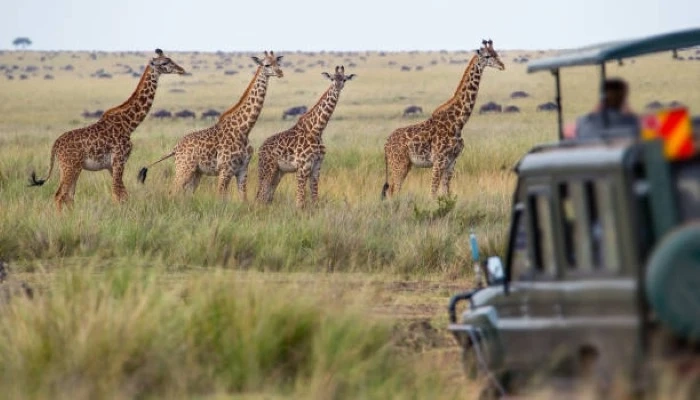Embarking on a safari to Tanzania immerses you in landscapes teeming with iconic wildlife. From the sweeping Serengeti plains and the dense forests of Mahale Mountains to the volcanic crater of Ngorongoro, Tanzania offers unparalleled biodiversity and dramatic wilderness experiences. Meticulous planning—covering timing, park selection, lodging, transport, and health precautions—ensures your journey meets expectations and creates lasting memories.
Selecting the Best Regions
Tanzania’s northern circuit comprises Serengeti National Park, Ngorongoro Conservation Area, Lake Manyara, and Tarangire. The Serengeti hosts the world-famous Great Migration and vast predator populations. Ngorongoro’s crater floor supports high densities of lions, rhinos, and buffalo. Lake Manyara amazes with tree-climbing lions and flamingo-dotted shores, while Tarangire’s baobab forests draw elephants during the dry season.
The southern circuit—Ruaha and Selous Game Reserve—offers less-crowded safaris in remote settings. Ruaha’s diverse habitats support wild dogs and sable antelope, while Selous features boat safaris on the Rufiji River and extensive wilderness walking opportunities. Western parks, including Katavi and Mahale, specialize in chimpanzee tracking and hippo sightings, appealing to adventurous travelers.
Choosing the Right Season

Timing your safari to Tanzania shapes wildlife viewing and comfort. The long dry season (June–October) concentrates animals at permanent water sources and offers excellent road access. Mara River crossings occur July–September. Calving season in the southern Serengeti (January–March) produces vivid predator-prey interactions. Shoulder seasons (November, April) combine greenery, moderate wildlife activity, and fewer crowds.
Accommodation Options
Lodging ranges from budget tented camps ($100–$200 per night) to mid-range lodges ($300–$500) and luxury camps ($800+). Budget camps provide canvas tents and communal facilities. Mid-range camps include en-suite bathrooms, swimming pools, and dining tents. Luxury camps and lodges offer private plunge pools, gourmet cuisine, spa treatments, and exclusive concessions. Mobile camping safaris follow migration routes, setting up camp near wildlife concentrations each night.
Transport and Logistics
Safari to Tanzania itineraries use 4×4 vehicles for game drives and road transfers. Group transfers are cost-effective; private transfers offer flexibility. Domestic flights between airstrips save time but add cost. Book flights early to secure seats and confirm baggage allowances (usually 15–20 kg). Combine road and air travel thoughtfully to maximize wildlife time.
Essential Gear and Health Precautions
Packing essentials ensures comfort and safety. Bring neutral-colored, moisture-wicking clothing; sturdy walking shoes; a wide-brimmed hat; sunglasses; and high-SPF sunscreen. Include insect repellent, a first-aid kit, and any personal medications. Malaria prophylaxis and routine vaccinations (yellow fever, tetanus, hepatitis A) are recommended. Carry printed and electronic copies of passports, visas, and insurance. Reusable water bottles and eco-friendly toiletries support sustainable travel.
Budgeting and Costs

Tour costs vary by season, park combinations, and lodging level. Mid-range safaris average $300–$500 per person per night, inclusive of meals, park fees, and game drives. Luxury safaris exceed $1,000. Budget camping tours start around $150. Additional expenses include visas, tips, optional activities (balloon flights, walking safaris), and personal purchases. Allocate a contingency for unexpected costs.
Maximizing Your Experience
Customize your safari to match interests: photography tours emphasize early starts and extended drives; family safaris include cultural visits and shorter daily schedules; walking safaris focus on close-up nature experiences. Engage with certified guides and trackers who share deep wildlife knowledge, enhancing every sighting. Respect park rules—remain in vehicles except on guided walks and maintain safe distances from animals.
Conclusion
A well-planned safari to Tanzania blends optimal timing, diverse destinations, appropriate lodging, and essential gear to deliver unforgettable wildlife encounters. Whether witnessing the Great Migration, exploring remote southern reserves, or tracking chimpanzees in Mahale, your Tanzanian journey promises adventure at every turn. Start planning now for an extraordinary African odyssey.
The East African Safari and Touring
Address: 00001 Kiranyi Village, Sakina, Arusha, Tanzania
Contact No.: +255 687 723 488
Location MAP: https://maps.app.goo.gl/2cGWCvDroJR4Hv9K6



